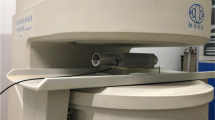Abstract
Three groups of dynamic triaxial tests were performed for saturated Nanjing fine sand subjected to uniform cyclic loading. The tested curves of the excess pore water pressure (EPWP) ratio variation with the ratio of the number of cycles are provided. The concept of the EPWP increment ratio is introduced and two new concepts of the effective dynamic shear stress ratio and the log decrement of effective stress are defined. It is found that the development of the EPWP increment ratio can be divided into three stages: descending, stable and ascending. Furthermore, at the stable and ascending stages, a satisfactory linear relationship is obtained between the accumulative EPWP increment ratio and natural logarithm of the effective dynamic shear stress ratio. Accordingly, the EPWP increment ratio at the number of cycles N has been deduced that is proportional to the log decrement of effective stress at the cycle number N-1, but is independent of the cyclic stress amplitude. Based on the analysis, a new EPWP increment model for saturated Nanjing fine sand is developed from tested data fitting, which provides a better prediction of the curves of EPWP generation, the number of cycles required for initial liquefaction and the liquefaction resistance.
Similar content being viewed by others
References
Chen GX, Zhu DH and He QZ (2002), “Development and Test of DSZ-1 Cyclic Triaxial Testing System,” Earthquake Engineering and Engineering Vibaration, 22(6): 71–74. (in Chinese)
Feng WL and Shi ZJ (1988), An Analytical Method Using Pore-water Pressure for Evaluation of Liquefaction Potential in Level Soil Layer,” Earthquake Resistant Engineering and Retrofitting, (4): 30–33. (in Chinese)
Finn WDL and Bhatia SK (1982), Predictions of Seismic EPWP, Stockholm.
Ishibashi I and Sherif MA (1982), “The Effects of Soil Parameters on Pore-pressure-rise and Liquefaction Prediction,” 22(1): 39–48.
Ishibashi I, Sherif MA and Tsuchiya C (1977), “Pore-Pressure Rise Mechanism and Soil Liquefaction,” Soils and Foundation, 17(2): 17–27.
Ivsič T (2006), “A Model for Presentation of Seismic EPWPs,” Soil Dynamics and Earthquake Engineering, 26(2–4 Spec Issue): 191–199.
Polito CP, Green RA and Lee J (2008), “EPWP Generation Models for Sands and Silty Soils Subjected to Cyclic Loading,” Journal of Geotechnical and Geoenvironmental Engineering, 134(10): 1490–1500.
Seed HB, Martin PP and Lysmer J (1976), “Pore-water Pressure Changes During Soil Liquefaction,” Journal of the Geotechnical Engineering Division, ASCE, 102(4): 323–346.
Sherif MA, Ishibashi I and Tsuchiya C (1978), “Porepressure Prediction During Earthquake Loadings,” Soils and Foundations, 18(4): 19–30.
Sun R and Yuan XM (2005), “Simplified Incremental Formula for Estimating EPWP of Saturated Sands Under Anisotropic Consolidation,” Chinese Journal of Geotechnical Engineering, 27(9): 1021–1025. (in Chinese)
Sun R and Yuan XM (2006), “A Method for Calculating Time-dependent EPWP Rise of Saturated Sands Under Earthquake Loading,” Earthquake Engineering and Engineering Vibration, 26(3): 261–263. (in Chinese)
Towhata I and Ishihara K (1985), “Shear Work and EPWP in Undrained Shear,” Soils and Foundations, 25(3): 73–84.
Yuan XM, Sun R and Meng SJ (2004), “Limitation of the Seed’s Method of Significant Cyclic Number in Analyzing Large Deformation of Soils During Earthquake,” Chinese Journal of Geotechnical Engineering, 26(2): 207–211 (in Chinese)
Zhang KX and Xie JF (1989), Soil dynamics, Beijing: Seismological Press. (in Chinese)
Zhang JM and Xie DY (1991), “A Practical Method for Calculation of Seismic Excess EPWP in Saturated Sand,” Journal of Hydraulic Engineering, (8): 45–51. (in Chinese)
Zheng YR, Xu GC and Xie DY (1995), “A Pore-water Pressure Model with a New Endochronic Parameter and It’s Applicability,” Journal of Hydraulic Engineering, (12): 39–53. (in Chinese)
Author information
Authors and Affiliations
Corresponding author
Additional information
Supported by: Key Research Project of National Natural Science Foundation of China Under Grant No.90715018; National Basic Research Program of China Under Grant No.2007CB714200; and the Special Fund for the Commonweal Industry of China Under Grant No.200808022
Rights and permissions
About this article
Cite this article
Wang, B., Chen, G. & Jin, D. Pore water pressure increment model for saturated Nanjing fine sand subject to cyclic loading. Earthq. Eng. Eng. Vib. 9, 569–576 (2010). https://doi.org/10.1007/s11803-010-0038-9
Received:
Accepted:
Published:
Issue Date:
DOI: https://doi.org/10.1007/s11803-010-0038-9




